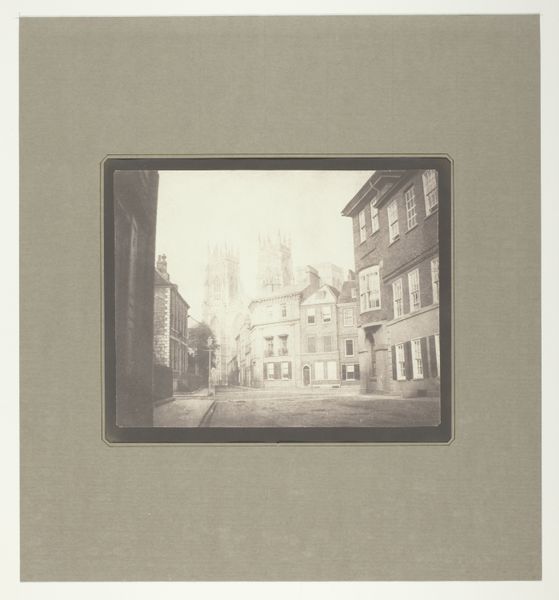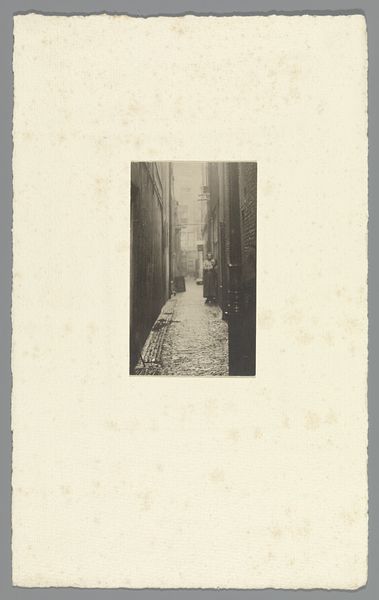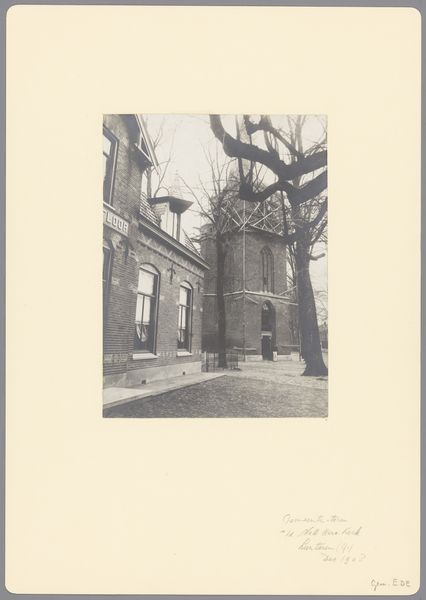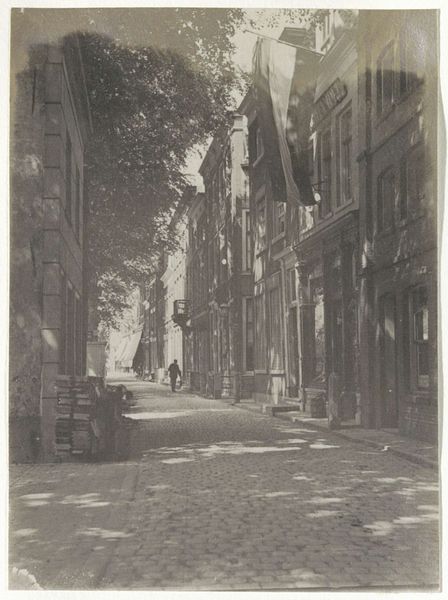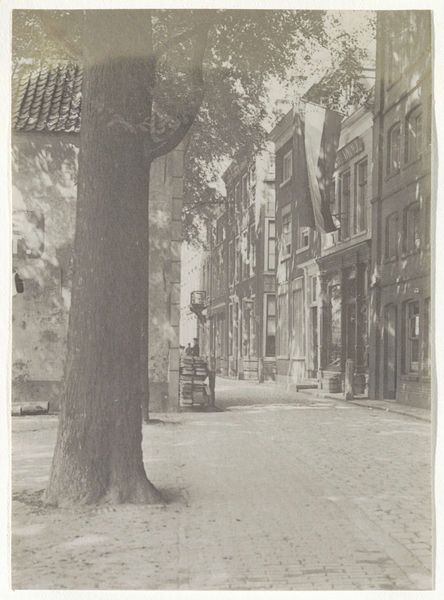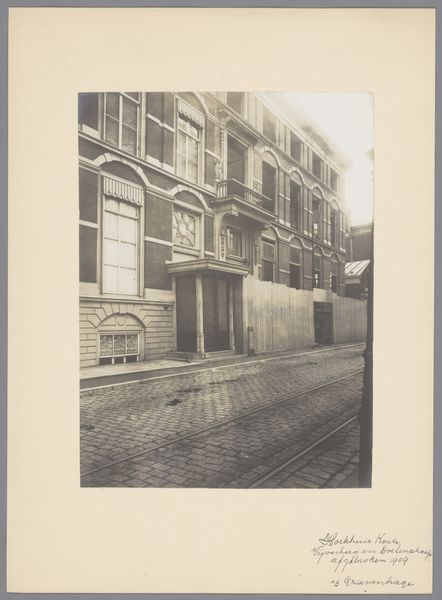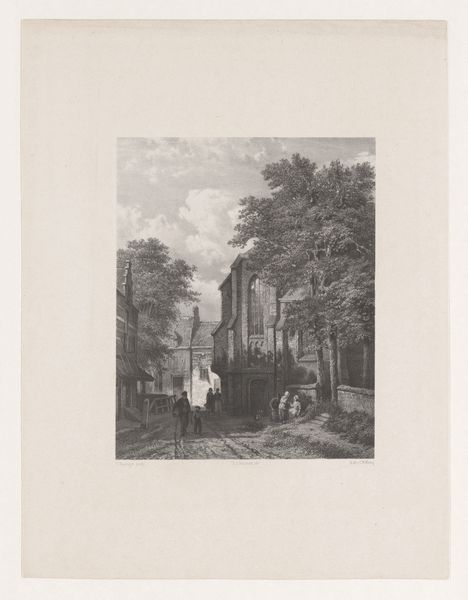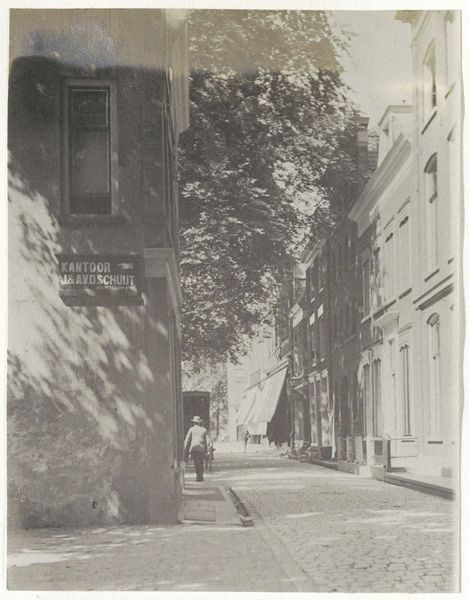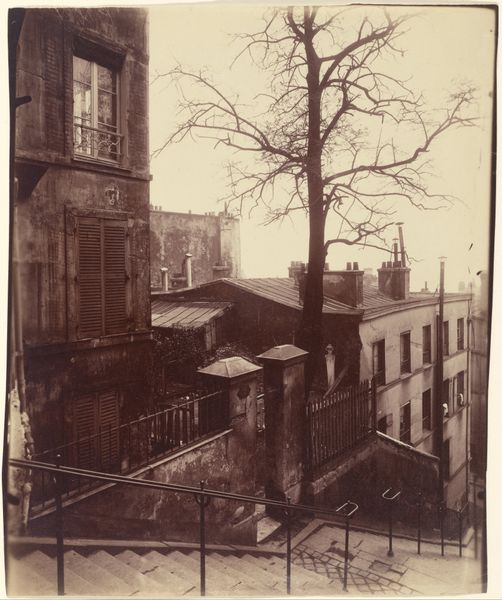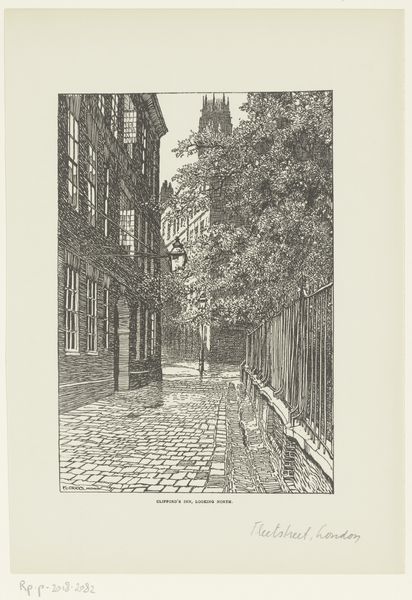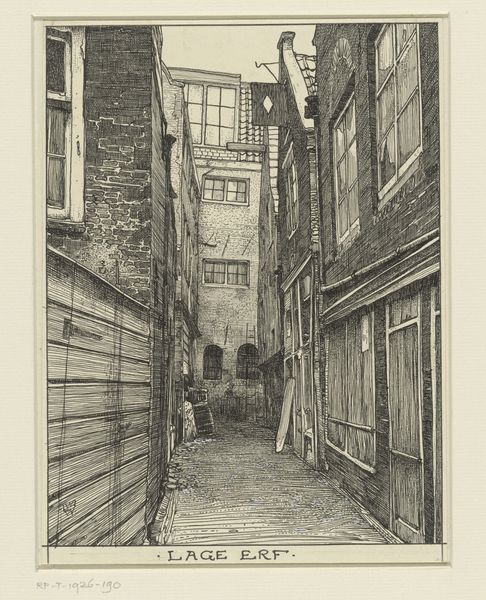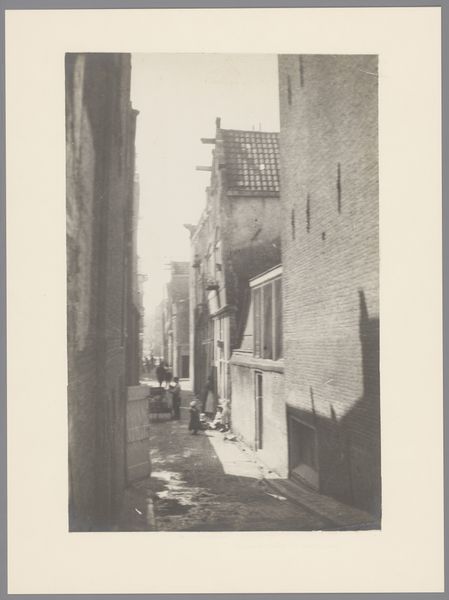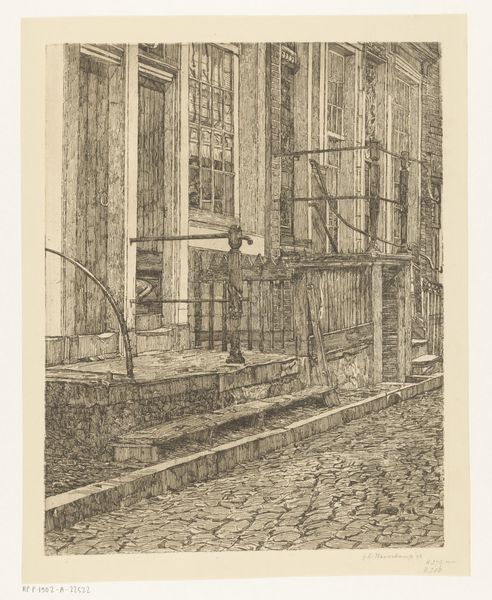
Gezicht op het Amerikaans paviljoen met Amerikaanse vlag op de Exposition Universelle van 1889 in Parijs 1889
0:00
0:00
print, photography
#
print photography
#
pictorialism
# print
#
impressionism
#
landscape
#
street-photography
#
photography
#
cityscape
Dimensions: height 228 mm, width 162 mm, height 322 mm, width 259 mm
Copyright: Rijks Museum: Open Domain
Hippolyte Blancard made this photograph of the American pavilion at the Exposition Universelle in Paris in 1889, using a camera and darkroom techniques of the time. It’s a straightforward black and white print. But think about the context: these international expositions were all about showing off industrial prowess. Photography was a key part of that. It was both a technology on display and a way of documenting all the other technologies. The image shows the flag, a symbol of the United States, but also the unadorned look of the pavilion. The bare trees and the wet street hint at the gritty reality behind the shiny facade of progress. Blancard’s work reminds us that even seemingly objective images are made with specific intentions, and within particular social and economic systems. In this case, the drive to celebrate industrial advancement and national identity. It’s a reminder of the importance of production and context to fully appreciate an artwork.
Comments
No comments
Be the first to comment and join the conversation on the ultimate creative platform.
